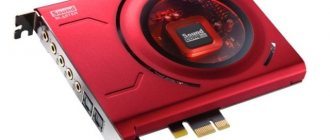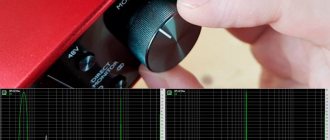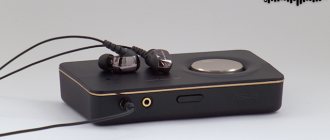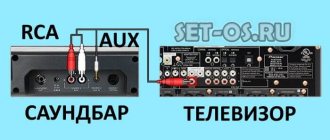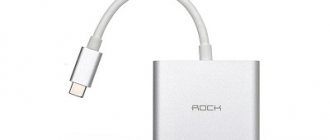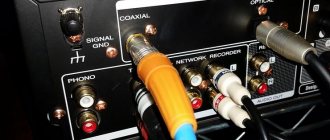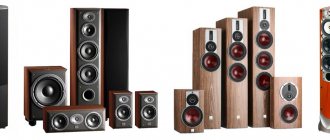“After all, the device has a huge number of jambs!”: 1.”buy and insert the batteries yourself” 2.”the thickness of the aluminum front panel is already 6 mm!!!” 3.”The handles don’t feel as solid to the touch as in the picture.” 4.”power supply; at the customer’s request, a 220-volt power supply can be installed. But there is no switch for 110 volts!” (So that some smart guy like the author of this article switches to 110 and burns out the trance) Protection from a fool This is a jamb! 5.”according to the instructions, a signal with a frequency of 192 kHz can only be supplied through coaxial and optics.” If you believe the instructions... It’s not destiny to check. 6.” Is that lamp really worth it?”…. 7.”in each specific batch, the manufacturer can use other components at will, and this process is somewhat unpredictable.” -GUESSES! Author, have you taken many of these DACs in different batches, and do you know about it? And in general! Any manufacturer of any equipment has the right to do this! They write about this in the manuals in black and white! 8.”The coaxial and RCA jacks are gold-plated, but this doesn’t help much and you’ll understand why later.” WHY??? Because the cable is slipping? What is the culprit of gilding? The manufacturer of this DAC does not make RCA connectors, he supplies them! 9″. Unpacked, figured it out and connected, pretty quickly. The device started working under Windows 7 without any problems.” AND WORKED for 4 long years! (Unstable own drivers. Or maybe they are other people’s drivers)))) Of course, because other people’s drivers are ruin and woe... 10. “4) The instructions say that a GE5670 lamp is used, but what is actually there?” If you don’t know what kind of lamp, then this is a Jamb by itself))) 11. “8) You need to work carefully with the seller” 12. “9) The seller does not indicate that when shipping the product by air, the battery will not be included in the parcel. 13. “11) The graphs show that the DAC has a significant drop in low frequencies. Nevertheless, many people liked its sound” 14. “12) Today the device is somewhat outdated - maximum 24/96 with a USB connection.” -(Supported sampling frequency: 32, 44.1, 48, 88.2, 96, 192 kHz, respectively; Supported bit depth: 16, 20, 24 bits, respectively.) Just “jambs!” straight
And the most important Jamb! This is Sound!)))
Sound. “Great sound that a lot of people liked.” The sound is rich, detailed, does not cause rejection, there is air, “Maybe I’m just used to it” Ha ha ha. Naturally, when you get used to the sound, it becomes detailed and airy! Enchantingly simple!
All the shoals are sucked out of thin air! An unsuccessful attempt by the author to crap this subject, so as not to humiliate himself in front of the audiophile public. Like cheap equipment cannot be audiophile and I don’t respect it, just like you, I’m also with you, gentlemen..
ps. Now I want to buy this DAC! The author is a little whiner from kindergarten.
XiangSheng DAC 03A I PCM1794 USB tube HIFI EXQUIS coaxial SPIDIF HD external sound card
This DAC with default USB module (TE7022L our SA9023) version is also in stock in Canada, we can give fast delivery for Noth American customer (USA and Canada), and additional discount about 40usd
Famous DAC-03A XiangSheng I. This version of dac-03A uses CS8416 receiver chip and PCM1794A chip for fonction decoding
Black/Silver SA9023 USB Option with SA9023 USB decoder (USB has 24b/96kHz indoor sampling)
Black/Silver XMOS USB option with XMOS USB decoder (USB you have 24bit/192kHz sampling room)
Performance characteristics:
- OSSA9023USB Device Compatibility: Almost Windows, MAC, Android, Apple-phone (camera set only) OSXmosUSB Device Compatibility: Almost Windows, MAC, Does not support phone/tablet
- This DAC has two stereo RCA outputs: Regular op-amp output or buffer tube output. It is convenient with a tube amplifier or transistor amplifier to get different effects.
- Amplifier main board with double panel design, production thin.
- Local digital and digital to analog conversion receiver using CIRRUS CS8416 and TI's PCM1794A
- The tube output module uses Russian 6H3n tube, the sound is soft. High voltage and filament DC power supply.
- The DAC has 3 Op-amps: this is OPA2134PA or OPA2604AU Or another quality/price op-amp, the manufactory is often op-amp, so we can’t be sure it’s op-amp, but still the same/very close quality/sound ( confirmed by manufacturer XiangSheng)
- The machine's resistors, capacitors do not use SMD components, but have high quality discrete fever assembly component, so the sound quality can be guaranteed. The machine uses many fever components: Japanese metal film resistors, German WIMA polypropylene capacitors, Suren capacitor, CBB subminiature metallized polypropylene capacitors, monolithic capacitors . Never use polyester, tiles or other common components. Thus, providing clear sound, high resolving power, small bass, wide sound field and so on.
- LED indicator for source inputs
- Using high-performance P-type Transformer power supply (often used in high-end Hi-Fi equipment), although the cost ratio of round, square transformer has increased significantly, but high efficiency, small magnetic leakage.
- Digital and analog part of independent power regulator Rectifier filter to reduce interference
- The RCA output and coaxial plug are gold-plated to reduce contact resistance.
- The implementation of machine functions adopts MCU control, channel status and volume remember when the last shutdown
- It uses almost all HIFI level and high quality electronic components
Size information and parameters:
- Dimensions: Width 260 mm, depth 167 mm, height 55 mm
- 4 digital signal inputs: BNC, coaxial, optical (SPDIF), and USB
- Frequency response: 20Hz-30kHz
- SNR: OP-amp port output: 110 dB Tube port output: 90 dB
- Harmonic distortion: Total port output: <0.001 Tube port output: <0.1%
- Support 16bit, 20bit, 24bit digital stream
- Supports the following sampling rates: 44.1 kHz, 48 kHz, 88.2 kHz, 96 kHz, 192 kHz
- Output level: 2000mV
- Dynamic range: 120dB
- Input impedance: 75 ohms
- Output line impedance: 600 ohms
- Input voltage: 100-230V/50hz60hz power supply switch
- Net weight: about 2kg
The buffer tube is replaced by Russian 6H3n tube:
SA9023 USB (oscillator is on the back of the USB card):
XMOS USB card:
HIFI EXQUIS will give this DAC a safer package:
| You should download the Windows Driver for XMOSUSB Extends Card from a copy of the following link: Hifi. exquis.free.fr/driver/dac/XiangSheng/XiangSheng_xmos-U8-class2-driver-3048-v2.23.0.zip Or from 2022 the device must use the new Hifi driver. exquis.free.fr/driver/dac/XiangSheng/Special-XiangshengXmos_Driver.zip |
SA9023 usb does not need installation driver, it will be installed by OS directly
To install the driver: Disable your amd antivirus, unplug the usb cable before installing the driver, and then connect it later.
Choosing the cheapest stationary DAC with a built-in headphone amplifier
We've already reviewed several DACs with built-in headphone amplifiers in the $150 to $250 price range. At the same time, I immediately received a request to do the same, but within a maximum of 50 dollars. I would like to draw a line right away: for that kind of money these cannot be reputable brands and you are unlikely to get any aesthetic pleasure from contemplating their appearance. In addition, solutions in this segment rarely boast ultra-low noise and minimal distortion. But these will be normal stationary DACs with fairly good quality and decent sound. And yet, I exclusively consider DACs with a built-in headphone amplifier. This is important for me and I focused exclusively on such solutions.
AIYIMA DAC-A2
Buy here
This DAC can receive a signal via USB, optical or coaxial. It has a simple equalizer on board with separate adjustment of low and high frequencies. And most importantly, power is supplied via a standard MicroUSB connector. This will allow us to consider the quality of the cable within a wide range. There are two outputs: RCA linear and classic 3.5 mm minijack for headphones. The DAC outputs 24 bits 96 kHz via USB, and up to 24 bits 192 kHz via optical and coaxial. The difference lies in the BRAVO SA9023A chip used, which simply cannot go beyond the minimum Hi-Res. However, even this quality will be beyond your eyes.
CSR8675 Pro
Sold here
The CSR8675 Pro is based on the respectable PCM5102A chip and supports connection via the AptX HD bluetooth codec. For which the no less respected CSR8675 takes the rap. The outputs here are exactly the same; the inputs include Bluetooth and USB Type C. We should also highlight the presence of replaceable DIP-8 amplifiers. Initially, plugs were installed here, that is, chips of the minimum level and price list. But by experimenting with them, you can not only improve the quality of sound and measurements, but also adjust this sound to your own tastes.
KGUSS Q2
Find out the price
We have already encountered solutions from the “goose” and I was quite pleased with their quality. This DAC attracted me primarily because it does not require additional power. The input here is only USB, the outputs are standard. The DAC is pleased with both the high-quality ESS ES9018K2M converter and the selected AD823 op-amps. Only the SA9023 USB chip can be noted as controversial. However, before XMOS, these solutions can truly be considered the best.
Clover Audio
Buy here
Via USB, this DAC runs on the CM6631A and provides resolutions up to 24-bit 192 kHz. The device is supplied in the form of a scarf or three different body configurations. You can find older versions a little cheaper, so I recommend not saving $1.5. Among the interesting things here is support for USB, optics and coaxial input, three separate frequency generators and a hardware DAC ESS ES9023. A very serious application for its segment.
XMOS U8 + AK4490
Sold here
From the name, you can immediately understand two things: that the manufacturer did not bother with it at all and that there is quite solid hardware inside. The XMOS U8 practically guarantees us high quality USB with ASIO support, and the dedicated AK4490 DAC highlights the seriousness that has gone into this device. AK4490 is no longer a joke; this chip is also installed in solutions that cost several hundred thousand. Well, as a cherry on the cake, you will get a replaceable op-amp at the headphone output. And this would have been the coolest solution if I had not come across an updated version.
WEILIANG SU2A
Find out the price
Here we already have the current XMOS XU208 with guaranteed ASIO, as many as 4 frequency generators and the latest ES9038Q2M DAC. As they say, it couldn’t be cooler. Plus a replaceable operational amplifier. In general, I took exactly this one for myself. There are variations with and without Bluetooth.
KGUSS DAC-K3
Buy here
Well, the good old KGUSS DAC-K3 also entered our price niche. I tested it personally and I can state that the device is very suitable. It was even a pity to part with him. Inside are two replaceable op-amps for linear and headphones, CS8412 and CS4398 as chips. If anyone wants one of the proven options for 50 bucks, you can safely take the “goose”. The review is here on the website.
AIYIMA DAC-A5
Sold here
Another option from AIYIMA with input stream on USB, optical and coaxial. The chipset was designated to us as CM6642 as USB, CS8416 receiver, CS4398 DAC and amplification on TPA6120 and OPA2134. Well, very good. And for its price tag it’s absolutely fire. At the same time, the board marking seemed very familiar to me and I recognized it as the good old Dilvpoetry DAC-X6 Pro. I think this is him. It loses to Goose only in the impossibility of quickly replacing operational amplifiers. Here they will have to be soldered. Unless of course you want to experiment. But the solution is also valid.
LiNEAP A936
Find out the price
Well, for dessert I left LiNEAP A936. USB, optical and coaxial available. The filling is USB chip VT1630, CS8416 receiver, CS4398 DAC and amplification on TPA6120A2. Which guarantees us 910 mW at 32 Ohms or 1 W at 16 Ohms on headphones. For tight headphones, this is perhaps the best solution. Plus, a fairly common brand among inexpensive audio and a test mincemeat. Owners of 150 - 300 ohm headphones take note.
As a result, I already had several of these models and showed simply amazing quality and capabilities for their price. I have already ordered a couple more for testing for myself personally. In terms of hardware, all solutions are definitely worthy of attention, their outputs are equivalent: RCA + headphones, but look at the inputs yourself. Whether you need optics and coaxial or not. Also pay attention to the availability of replaceable amplifiers. This is a special bonus and an amazing time. And of course, balance the output power with the impedance of your headphones. Enjoy the shopping.
Xiangsheng DAC 01a, 02a and 03a
The Xingsheng DAC-03a DAC has been on the market for quite a long time by the standards of the modern rapidly changing model range (especially the Chinese one) and at the same time remains one of the most exciting offers for a demanding listener not burdened with large financial resources.
Excellent quality PCM1794 DAC, excellent output op-amps - LM4562 as an I\U converter (converting current to voltage) and OPA2604 as a low-pass filter.
And the DACs sound really emotional, detailed and just great. But its advantages do not stop there, since the DAC has a second alternative output on the lamp. Yes, this is a DAC with a tube output, and it uses a pretty good GE5670 tube, its simpler version 6n3.
GE5670
Okay, everything is known about the Xingsheng DAC-03a and is already well described on the website, but there were other models in this line.
We will not touch on the more advanced model 05a, which claims to be of a higher class, but at the same time is less balanced in sound, having a timbral bias towards the light side (which, again, can be a plus for a “dark” audio system).
Interested in cheaper models that preceded the Xingsheng DAC-03a, namely models 01a and 02a.
The first model Xingsheng DAC-01a was built on the CS4398 DAC.
A number of listeners reacted favorably to her, although noting that they had previously heard little good and could not compare.
The first model already had all the features of what we will eventually see in 03a. There was an interesting tube output and an op-amp output.
A good USB receiver was installed on the TE7022L.
Guys, I myself doubted this model of the receiver, but as it turned out in vain, after the Xiangsheng DAC-03a on XMOS I got my hands on this model (03a) on the TE7022L and I didn’t “see” any difference.
Nevertheless, there are two 01a models - regular and luxry or lurury (of course it’s funny to read how the Chinese use English words meaning “luxury, luxurious”). The regular version has simpler parts, mainly concerning capacitors, and also uses a more primitive 6n3 lamp and a TE7022L USB receiver.
6N3
The luxury (luxry, lurury) version 01a does not have small electrolytic capacitors - this is the first thing that catches your eye, but the important differences are a more luxurious GE5670 lamp and a USB receiver on XMOS. Of course there is U8 there.
XMOS U8
I think it would be appropriate to have a small educational program on the topic of XMOS and its versions.
XMOS is a powerful RISC processor that can process 8 threads simultaneously, switching to each thread at least 11 nanoseconds. The speed of this processor is 500 MIPS (millions of operations per second). This is a very fast processor for our tasks, and all that remains is to equip it with a high-precision clock and we will get an excellent USB receiver with minimal jitter. The U8 daughterboard is made on this processor in China. But now U208 boards are also available - the difference is that they use the next generation multi-core XMOS processor, which already has a speed of 1000 to 4000 MIPS and, accordingly, can perform calculations even faster.
Boards based on the new XMOS 200 series are called U208.
So we return to the Xingsheng DAC-01a - at the output it produced a voltage of up to 2 volts.
Typically, none of the sellers for model 01a indicate the models of op-amps used, but in most cases they sell cheap OPA2604 (50 rubles each).
The signal-to-noise ratio at the transistor output is 96 dB, which is the full dynamic range of a compact disc (CD), and at the tube output it is 90 dB.
Sampling frequency is supported up to 96kHz/24 bit (receiver capabilities).
The dynamic range of the device is 117 dB.
It would seem that I have already noted that the signal-to-noise ratio of the DAC is 96 dB, and I immediately claim that the dynamic range of the device is 117 dB.
In general, DD and SNR are similar concepts, but still they are not the same thing.
I will give excerpts from the blog of one of the fans of high-quality sound - the original https://livesoundjournal.ru/dinamicheskiy-diapazon-i-signalshum/
Dynamic range (DR) is the difference in level between the highest peak of the signal that can be reproduced by the system and the amplitude of the highest spectral component of the noise .
Signal to noise ratio is the difference between the average signal level and the average noise level .
It follows that a device that operates at some average output level of the program material should have peaks that exceed this level by 10-20 dB.
Headphone output with impedance 32-600 Ohm.
So on to the cons. The main thing that everyone notes is the poor quality of the headphone amplifier; there really is a very primitive microcircuit for the headphones, which is quite noisy.
If you buy a non-luxry version, you get simpler-sounding tubes (6n3) and simpler radio components. If you are ready to fork out for the luxry version, then after all the tricks you may suddenly find that the 03a model costs the same, or even cheaper, but has better filling!
01a
03a already has GE6570 without any Luxry versions; it already contains (at the moment from a number of sellers) the best components from the Luxry category. It already contains op-amps of a completely different level - LM4562, and in addition, the DAC itself is a more successful PCM1794.
03a
Of course, Marantz makes successful products with the CS4398, but with the PCM1794 it’s easier to achieve better results.
But the “old” models do not give up, for example, one of the options for 01a is offered on LM4562 + LF353 installed in gold-plated adapters, Elna, Rubicon capacitors, etc.
Nevertheless, it is in the choice of the DAC chip model itself and the low-quality headphone output that the main disadvantages of the 01a are seen. Already in model 02a, the developers, while maintaining the general concept (two alternative outputs - on a lamp and on an op-amp), replaced the DAC model from CS4398 to AD1955, noting that this is much better than the previous one.
02a
And AD1955 is one of the main berries that you want to eat in combination with Xiangsheng 02a filling.
But when you start to consider this option in more detail, you see the following picture.
Xiangsheng DAC-02a is already similar in filling to 03a
Again there is a simpler 6n3 lamp, but for the GE5670 you will need to pay extra.
The dynamic range is already specified at 120 dB.
There is a high-quality BNC connector, on which listeners noted the best sound quality.
As a plus, I’ll immediately include the excellent SPDIF receiver on the DIR9001 - that’s a plus.
The result is a tasty combination of AD1955+DIR9001.
AD1955 DAC
The disadvantage again is the low-quality headphone output based on the XPT4863 chip. It's a Chinese chip, so everything is in Chinese - I don't understand anything. But such an inscription as 10% THD is quite disappointing, as are the reviews of people who tried the headphone output.
Maybe that’s why in the next 03a line there are models without a headphone output at all.
You can probably get good results with the 02a model, but you'll have to shell out for the Luxry/Upgrade/Lurury version, and the price per DAC will be equal to or higher than the Xiangsheng DAC-03a!
In principle, being aware of the shortcomings and subtleties, I am still interested in all 3 models: 01a, 02a and, of course, 03a. The question is the price. Of course, 01 and 02 are cheaper, but upon closer inspection you find out that this is only because key components have been replaced with lower quality ones, and once you eliminate this by installing higher-quality lamps, op-amps and capacitors, there is no price advantage left.
The CS4398 may sound interesting, just like the DAC on the AD1955 attracts even more attention, but again the frankly poor headphone output (good thing I don’t care) and the price at the 03a level begin to make you doubt the right choice. Sellers write that 02a and 03a are much better than the first model.
Having tormented the Chinese seller a little with questions about the 02a, the possibility of upgrading it to lm4562/GE5670, etc., in the end I directly asked whether the original model 03a would sound better. They told me that Xiangsheng DAC-03a sounds better, it is the best choice.
Understand correctly, I do not intend to belittle any model, I would be very interested in listening to, for example, the Xiangsheng DAC-02a on AD1955+DIR9001+LM4562 (and in this variation it could potentially be even better, I don’t know), but if you choose the first inexpensive DAC, then the Xiangsheng DAC-03a on LM4562 is guaranteed to give you a good solid Hi-Fi level and a lot of listening pleasure, a lot of variability - I want a lamp, I want an op-amp - all this is in the model.
As for the optimal choice, the Xiangsheng DAC-03a still remains one of the most desirable and expected models, along with the SU3 (Sabre9018 + 2x Muses8920 + 2x AD797). Of course, the potential and level of SU3 is impressive and reaches even where the PCM1794 falls short, but again, the Xiangsheng DAC-03a also has an exciting tube output, etc. In addition, students have positive experience using discrete Burson-type assemblies in Xiangsheng DAC-01-03a,
which, according to reviews, leave many/any op-amps far behind in sound quality.
In short, all this is incredibly interesting and exciting - immerse yourself in this audio world and enjoy communicating with music.
